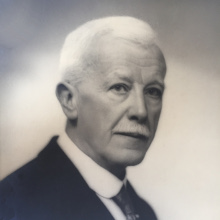
To understand how the British colonial administration worked, reading biographies is a good idea. One interesting figure is Alfred Chatterton (1866-1958), engineer, teacher, administrator, and corporate consultant. One or two articles aside, he does not have a proper biography.
Chatterton worked in India roughly between 1888 and 1930. His last big post was Industries Director Madras, an office that came with little money and power. Chatterton made a difference by using his position to do experimental research and publicize his findings.
He believed that farmers and artisans held the key to Indian development and that they needed useful knowledge about affordable tools with a potentially big effect. He talked to farmers and artisans to find out what these innovations might be and zeroed in on four ideas.
(1) Water: ‘Water is likely to become the great Indian engineering problem,’ he wrote in 1912, and campaigned for construction of wells in arid areas run with power-driven pumps. A century later, India has one of the highest densities of wells in the world.
(2) Chrome tanning: India had surplus hides for export, but these were badly processed. Chatterton pushed for chrome tanning, which would reduce processing time and improve quality. Today about half a million people live on tanning in the region where he campaigned.
(3) Improved looms: Chatterton believed that the largest industrial group in India, handloom weavers, needed better and faster tools. The campaign had an effect. But this kind of intervention lost momentum after independence as the government subsidized the handlooms instead.
(4) Wind energy: He did some experimental studies with wind energy to conclude that ‘there is a wide field in India open for the profitable employment of windmills in lifting water.’ Nothing much came of it then. Wind energy is big now.
Each idea was either prescient or left a solid legacy. Because trashy popular history tells us to read India’s colonial past with an anti-British lens, Chatterton’s contribution to empowering the small producer is largely forgotten.
Instead, we make much of contemporary nationalistic dreams of rural development. Like khadi - a rag-like cloth that consumed billions in taxpayers’ money and still appeals to no one but the odd political activist.
• • •
Missing some Tweet in this thread? You can try to
force a refresh





